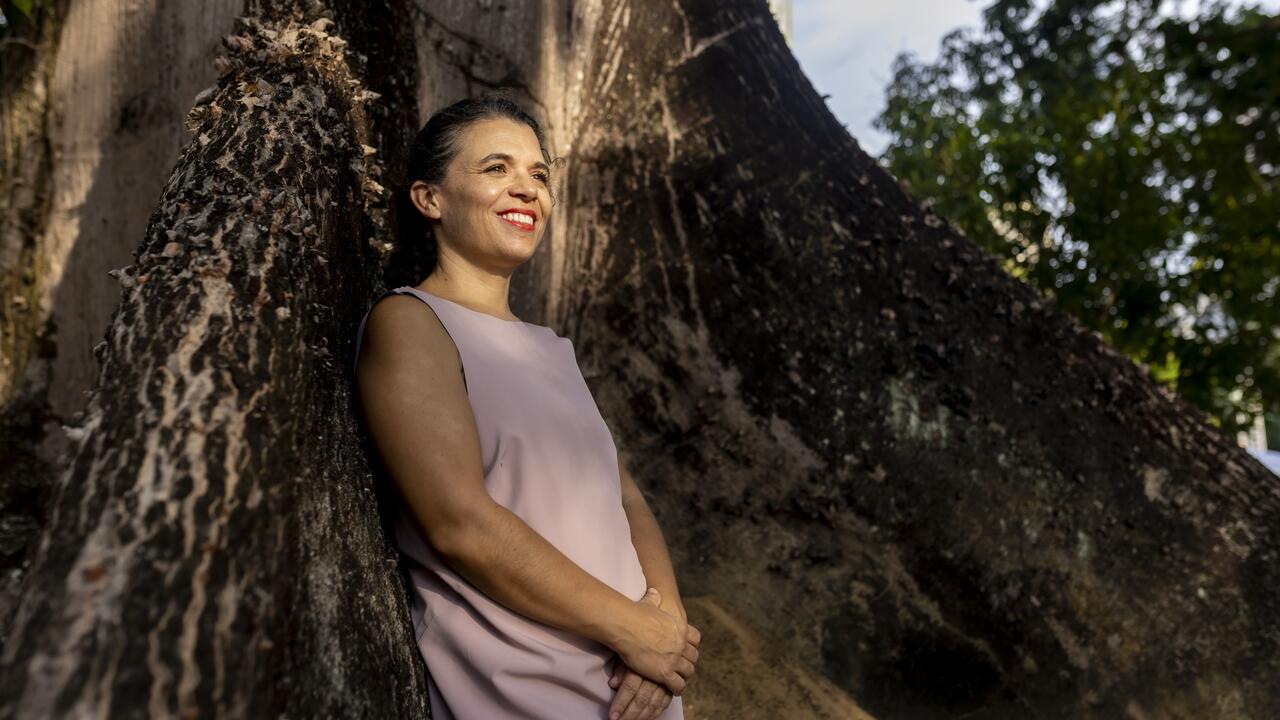Beat Streuli
In Beat Streuli's multi-slide installation Oxford Street (1997) there are no sounds, smells, shops or traffic. In fact, there is little visual information to differentiate his vision of Oxford Street from any other Western high street at all, since everything that characterises it and makes it unique as a location has been left outside the frame. What we do see are portraits of the anonymous individuals that populate Oxford Street's insufferably over-crowded pavements: tourists, workers and other pedestrian consumers of varying race, age, dress, gender and class - a heterogeneous urban mix. But for Swiss photographer Beat Streuli, this is insignificant, because markers of difference - ethnic or otherwise - are all subsumed under the rubric of Beauty and of the humanistic cult of sameness.
Beat Streuli is a practitioner of what one could call a reactionary Postmodernism, one that erases difference, and by extension, history and experience, into a flat universalism cloaked in pluralist garb. The all-inclusive, populist notion of the high street as a leveller of democratic values amongst potential consumers (we all need new clothes at some point) has been taken literally as a dubious ideological strategy: the gratuitous formal device (shopping on Oxford Street) becomes a naturalised bond among diverse peoples. Like the characters in a Nike advertisement, the subjects of Streuli's slick photographs have been elevated to heroic status as overtly aestheticised idealisations of the common man or woman made larger than life. Oxford Street, like the other sections of Streuli's ongoing series depicting individuals and crowds, is a panoramic slide show of people caught and framed unawares by the imperious gaze of the camera's telephoto lens, while the photographer remains visibly 'invisible' in the sea of pedestrians.
An anonymous 'foreigner' himself, Streuli has captured the diverse physiognomies of punters and passers-by on this bustling high street in uncannily inert photographs. Men, women and children are zoomed-in on (generally in profile), showered in the heavy glow of winter sunlight as the telephoto lens abstracts them from their surroundings. All the portraits depict an almost identical state of deep introspection, an intimacy paradoxical in such a public space. Via linked slide projectors, fragmented heads quietly pass across and dissolve into the space, whilst the minutiae of facial movements are recorded almost cinematically over real time in vivid colour or black and white by the high speed shutter of Streuli's camera. Up to eight pictures can be seen simultaneously, allowing multiple images of different people to overlap or juxtapose in various spatial configurations: at one point we see a full-frame shot cover the entire wall with a crowd scene of people's heads looking downwards, ready to enter an underground station.
An anomalous bus window or car door occasionally appears as a contextual reminder of what we are supposedly looking at: Oxford Street. This is irrelevant. Although technically accomplished, Streuli's photographs betray a kind of conceptual amnesia. Indeed, there is more depth and intellectual rigour to be found in advertising than there is over the forty minute duration of Oxford Street. As an unreconstructed observer of the cult of beauty, Streuli presents a fragmented collage of portraits utterly disassociated from the complexity of the real thing. The true experience of Oxford Street is one of conspicuous consumption - how shops and street hawkers manipulate potential consumers into buying goods they do not need. Streuli is uninterested in this; grounded in the myth of a shared human 'essence' as an illusionary antidote to the Real, he prefers to envisage Oxford Street as a world populated by pretty girls.

















